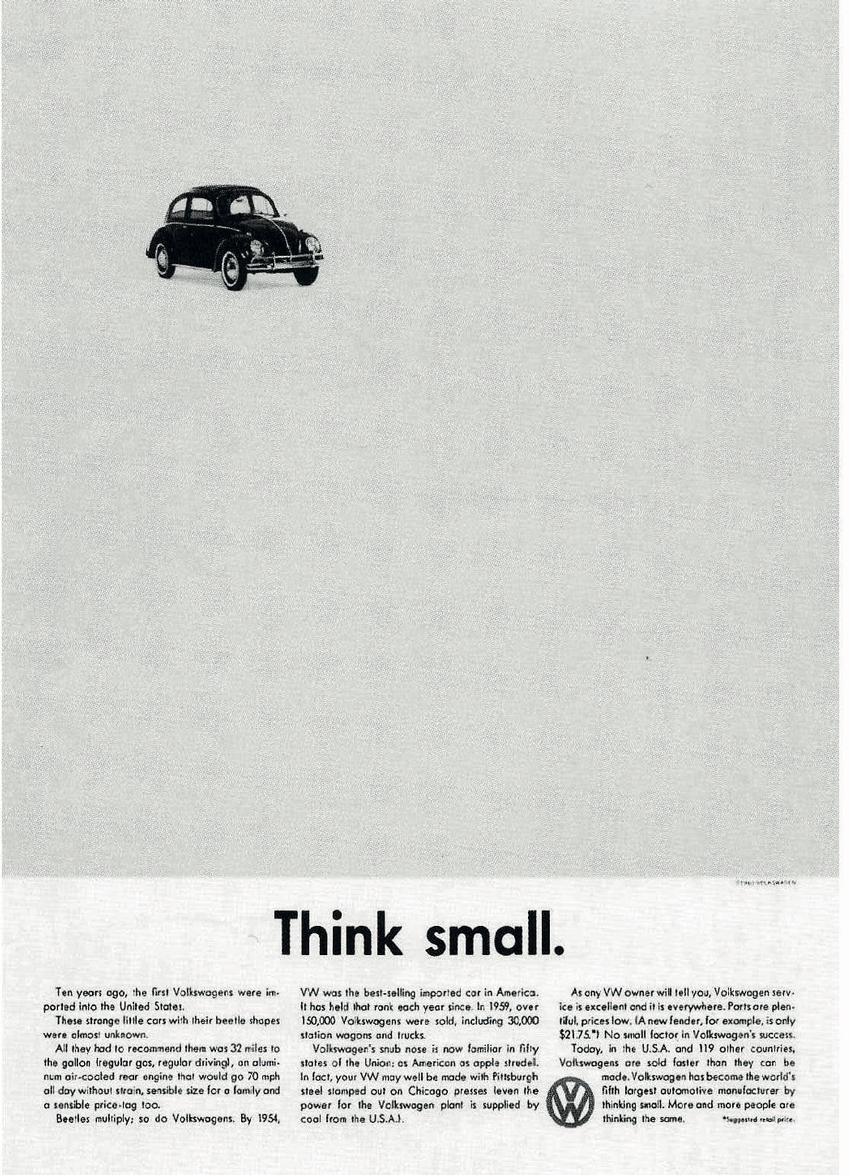The shifting marketing (research) reality: from craftmanship to automation
During the industrial revolution, man created the machine to speed up product manufacturing. Since then, both the functional and intellectual capability of machines have grown to the extent that their presence has stretched far beyond the industrial sector, including the field of marketing (research).
During the Mad Men days, ca. ’60s, marketers were seen as the creative superstars. Marketing was defined by craftmanship and mastered by the out-of-the-box thinkers; coming up with a catchy slogan or a fetching ad was how you made a name for yourself and as a brand. Volkswagen without a doubt is a brand that has known how to market itself since the ‘60s. Together with ad agency Doyle Dane Bernbach, the brand crafted the iconic campaigns that would launch Volkswagen in America. The Beetle ad in particular with its slogan “Think Small”, referring to the much smaller size of the car compared to typical American family cars on the streets, was revolutionary. The simplicity of the ad was also an eye-catching element and this new way of thinking certainly payed off; in 1967, the car model sold 430,000 units, which upgraded the Volkswagen to the most sold imported car in America.

Yet having the best or most creative campaign ideas no longer is all that matters. Alongside the passing of the madmen days, marketing shifted from craftsmanship to automation.
The rise of bots and Artificial Intelligence is at full speed, with the human brain being surpassed by smart machine-learning systems. Being outplaced by robots will soon be the new normal, even in marketing (research), as machines are firmly complementing and even replacing humans. Research by McKinsey Global Institute projected that 60% of all occupations consist of at least 30% of work activities that could be automated by 2030 and that half of today’s work activities could be automated by 2055. And it is already happening today. Kit, for example, is an Artificially Intelligent marketing robot recently acquired by Shopify to help the company plan its e-commerce and digital marketing strategy. This bionic assistant takes on the tasks of running the company’s social media ads and manages the brand’s e-mail marketing campaigns.
The same goes for the marketing research field. The art of asking the right questions is increasingly taken over by machines. In this new scene, platforms and technologies have risen providing research users the flexibility to ask questions when, where and how they want, using the comfort of their own devices. These new technologies anyone, with or without research background, to set up a research project and collect data. Yet, what does this mean for the market research industry and how does it impact the role of a researcher? Learn more in our Have we lost our EDGE? bookzine, available for download.




